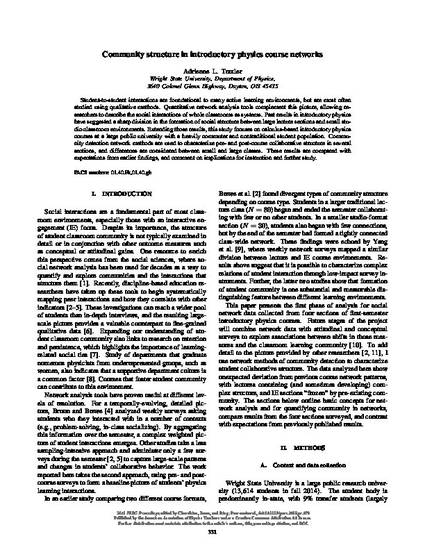
Student-to-student interactions are foundational to many active learning environments, but are most often studied using qualitative methods. Quantitative network analysis tools complement this picture, allowing researchers to describe the social interactions of whole classrooms as systems. Past results in introductory physics have suggested a sharp division in the formation of social structure between large lecture sections and small studio classroom environments. Extending those results, this study focuses on calculus-based introductory physics courses at a large public university with a heavily commuter and nontraditional student population. Community detection network methods are used to characterize pre- and post-course collaborative structure in several sections, and differences are considered between small and large classes. These results are compared with expectations from earlier findings, and comment on implications for instruction and further study.
Available at: http://works.bepress.com/adrienne_traxler/2/

Presented at the Physics Education Research Conference, College Park, MD, July 29-30, 2015.
Published by the American Association of Physics Teachers under a Creative Commons Attribution 3.0 license.